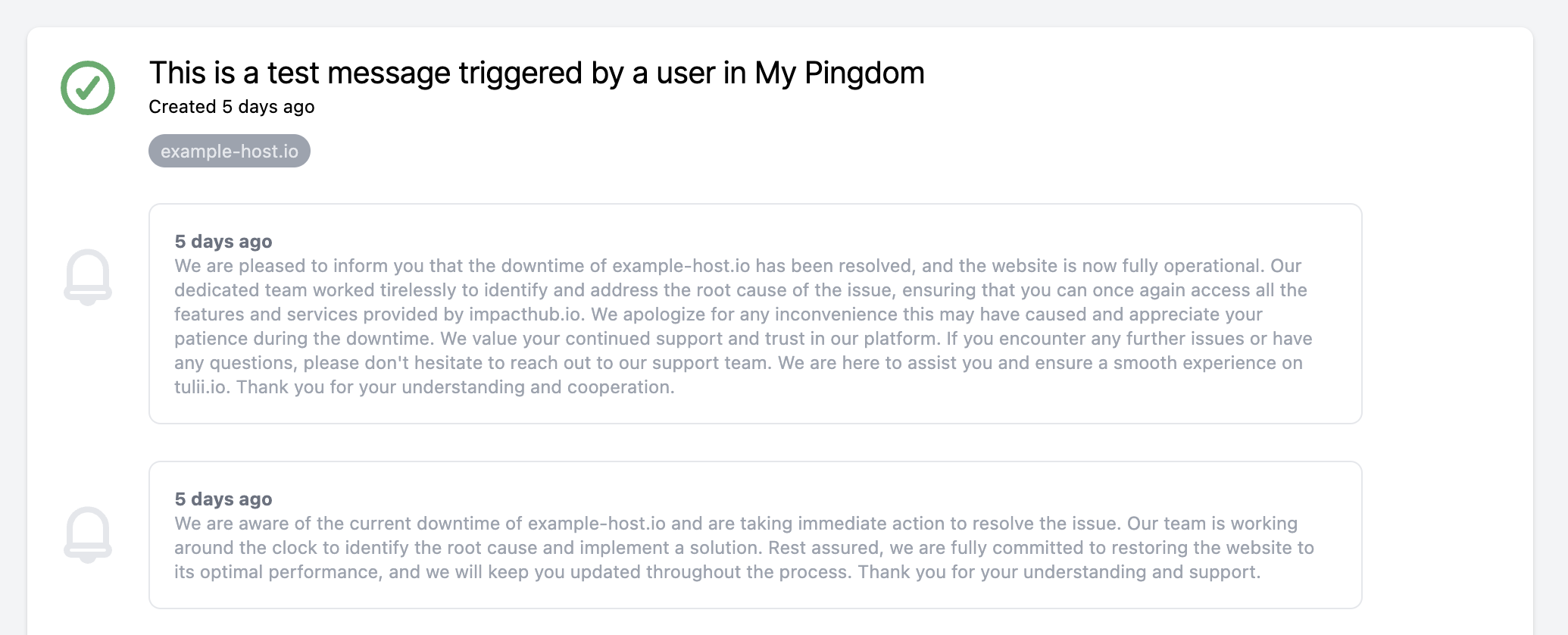01/ Pingdom integration overview
The integration between Pingdom and Tulli aims to enhance website monitoring and customer communication during downtime incidents. Pingdom offers comprehensive monitoring with global coverage (100+ locations worldwide), while Tulli focuses on keeping customers informed and reducing support tickets.
Through web hooks, Pingdom sends real-time alerts to Tulli when a downtime or uptime event occurs. This integration brings several benefits to businesses. Firstly, it improves monitoring capabilities by leveraging Pingdom's extensive network. Secondly, Tulli's customer communication features minimize the impact of downtime by promptly notifying customers and providing updates on issue resolution.
The integration streamlines incident response processes, allowing businesses to focus on resolving issues rather than handling repetitive support tickets. In summary, the Pingdom and Tulli integration empowers businesses with robust monitoring and effective customer communication, enabling proactive management of website performance, reducing downtime impact, and maintaining customer trust.

02/ Pingdom integration details
Pingdom will trigger a webhook whenever there is an status update: Both down and up again. Your Tulli status page will update accordingly, so the customers can be on the loop.
The services involved in the outage will be based on the “hostname” field informed by Pingdom. If non existing (on Tuliis side), a new service will be created.
A custom status message will be automatically generated.

03/ Setup guide Pingdom and Tulii
There are a few steps to integrate your Pingdom account with Tulii.
In Tulii
1. Log in on your dashboard and click the tab Integrations. Create a status page, if you dont have one.
2. Scroll down to Pingdom section and copy/paste your unique token. It will look something like “tl-token-5df56301bf885a0”. Please, keep it secret. The token should be treated like any other credential and used only with your Pingdom account.
In Pingdom
On Pingdom’s side, its a two-folded process: integrate Pingdom with Tulii, then update your alerts.
Once you have logged into your Pingdom account. You will need to set up an "Integration."
1. Navigate to Integrations > Integrations.
2. Click "Add integration," up in the right corner.
3. Select "Webhook" type.
4. Set the name.
5. Use "https://tulii.io/hooks/pingdom" as an URL.
6. Save these settings
Next step is where we update the uptime check:
1. Navigate to Synthetics > Uptime,
2. Open a check for editing (Down arrow, Edit),
3. Go to bottom to "Connect Integrations" section,
4. Select your Tulii integration,
5. Scroll back up to the section Tags and past in the secret token from Tulii (tl-token-secrethash) and press Enter to make sure it was registered.
6. Make sure “Alert when back up” is checked.
7. Save changes
Now Tulii and Pingdom are integrated. Customers will be on the loop during downtime and reduce support tickets for the team, so all the efforts are fixing the outage. Just get in touch if you have any questions.
